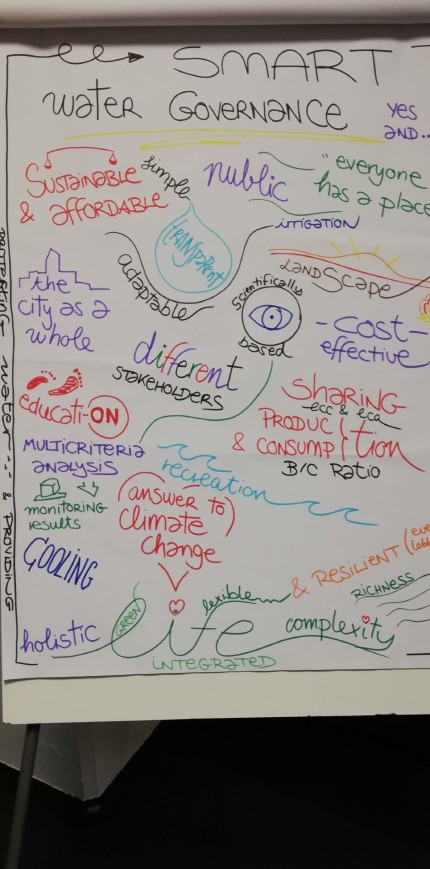SMART WATER GOVERNANCE
CWC aims at defining and introducing an innovative approach to the circular management of water resources. This approach, the Smart Water Governance, intends to foster the active involvement and engagement of the stakeholders and to make a good use of technological tools.
It is important to highlight that in a problem such as circular water management, if the stakeholders do not actively cooperate, fostering circularity is difficult or more likely impossible. Stakeholders experience, support, and collaboration is crucial. There are many actors involved, and in order to obtain good results it is necessary that everyone does carry out his/her own tasks. Furthermore, the active involvement of stakeholders in planning and managing is necessary to implement a multidisciplinary approach. Decision processes, roles and responsibilities must be transparent and shared. Stakeholders, including citizens, must receive proper engagement and tools for an active participation, according to their roles.
Beyond their obvious utility in technical installations, technological tools can improve knowledge and communication, increase citizens awareness and their ability of gather and share data. Smart monitoring tools can also improve the control on the project implementation and help in sharing transparently processes and results.
Although Smart Water Governance cannot be defined as a general set of rules and interventions, we have listed 6 areas of intervention that, properly deployed, can constitute elements of a Smart Water Governance.
The presentation created by Poliedra - Politecnico Milano makes understand the holistic approach of the topic.

Links for further inspiration
- WHO Guidelines for the Safe Use of Wastewater, Excreta and Greywater (2006). World Health Organisation Volume 1: Policy and regulatory aspects
- Innovative Water Tarifs
- Guideline for Water Reuse in Europe
Sustainability in global water circle (ITALIAN)
Smart Water Governance Presentation in ITALIAN
Presentation in POLISH - Decision making tool
Presentation in POLISH - Case studies
